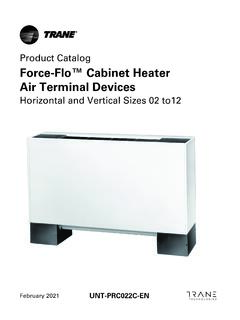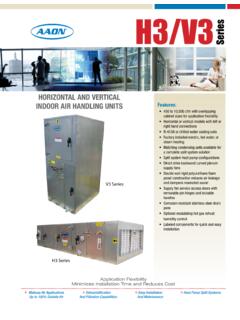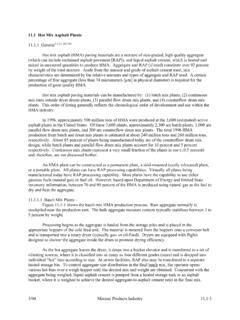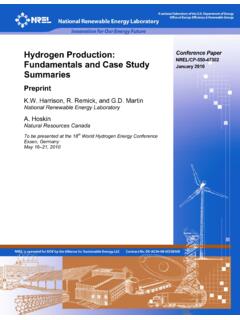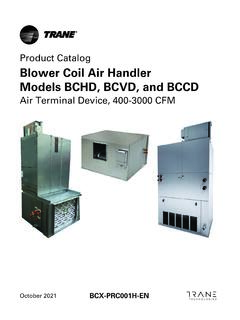Transcription of AUTOMOBILE ENGINEERING - KSRCE
1 AUTOMOBILE ENGINEERING CONTENTS Chapter Topic Page no. UNIT - I - VEHICLE STRUCTURE AND ENGINES Introduction to AUTOMOBILE or Vehicle 1 Types of AUTOMOBILE 2 Vehicle construction and Components. 3 Resistances to vehicle motion. 5 Components and Nomenclature 6 Engine support systems 12 Cooling system. 12 Lubrication System. 15 UNIT II - ENGINE AUXILIARY SYSTEMS Introduction of Ignition System 19 Fuel Injection system for SI engines. 19 Carburetion and Carburetor. 19 The Simple Carburetor 21 Types of Carburetors. 27 Fuel Injection system for C I engines. 28 Electronic Diesel Control. 28 Components in Diesel Supply System. 29 Fuel Injector: 33 Introduction of Ignition System; 34 CRDI - Common rail fuel injection system.
2 41 Turbocharger. 43 Catalytic converter. 44 Chapter Topic Page no. UNIT - III - TRANSMISSION SYSYTEMS Transmission Systems in AUTOMOBILE . 46 Clutch. 50 Single Clutch Plate. 53 Multi-plate Clutch. 55 Cone Clutch. 56 Dog & Sp line Clutch. 57 Centrifugal Clutch. 58 Electromagnetic Clutch. 59 Gear Box. 60 Sliding Mesh Gear Box. 61 Constant Mesh Gear Box. 67 Synchromesh Gear Box. 67 U- Joint. 69 The Drive Shaft. 71 Differential Unit. 72 Automatic Transmission. 74 Semi Automatic Transmission. 81 Hotchkiss drive. 86 Torque tube Drive 87 Chapter Topic Page no UNIT - IV- STEERING, BRAKES AND SUSPENSION SYSTEMS Introduction of steering system. 88 Ackermann steering geometry. 89 Steering Gear Boxes.
3 91 Power steering. 92 Suspension system. 94 Braking System. 96 Anti-lock braking system (ABS). 98 Hydraulic braking system. 101 Pneumatic braking system. 103 Loss of Traction. 105 UNIT V - ALTERNATIVE ENERGY SOURCES Natural Gas as a Fuel in AUTOMOBILE . 107 Liquefied petroleum gas as a Fuel in AUTOMOBILE . 108 Bio diesel as a Fuel in AUTOMOBILE . 109 Hybrid electric vehicle. 110 Fuel Cell. 111 Reference Books; 1. Kirpal Singh, AUTOMOBILE ENGINEERING Vol 1 & 2 , Standard Publishers, Seventh Edition, 1997, New Delhi. 2. , AUTOMOBILE ENGINEERING , Laxmi Publicaitions (P) Ltd.,2007, New Delhi. 3. , AUTOMOBILE ENGINEERING , Anuradha Publications, Chennai, 2013. 4. Joseph Heiner, Automotive Mechanics , Litton Educational Publishing Ins.
4 ,Newyork, 1999, USA, 5. Crouse Anglin, Automotive Mechanics , Tata Mcgraw Hill Publishing Cmpany Limited, New Delhi. 10th edition, 2004. AUTOMOBILE ENGINEERING OBJECTIVE: To understand the construction and working principle of various parts of an AUTOMOBILE . To have the practice for assembling and dismantling of engine parts and transmission system UNIT I VEHICLE STRUCTURE AND ENGINES 9 Types of automobiles, vehicle construction and different layouts ,chassis, frame and body, resistances to vehicle motion and need for a gearbox, components of engine-their forms , functions and materials UNIT II ENGINE AUXILIARY SYSTEMS 9 electronically controlled gasoline injection system for SI engines.
5 , electronically controlled diesel injection system ( Unit injector system, Rotary distributor type and common rail direct injection system), Electronic ignition system ,Turbo chargers, Engine emission control by three way catalytic converter system . UNIT III TRANSMISSION SYSYTEMS 9 Clutch-types and construction ,gear boxes- manual and automatic, gear shift mechanisms, Over drive, transfer box, fluid flywheel torque converter , propeller shaft, slip joints, universal joints , Differential, and rear axle, Hotchkiss Drive and Torque Tube Drive. UNIT IV STEERING,BRAKES AND SUSPENSION SYSTEMS 9 Steering geometry and types of steering gear box-Power Steering, Types of Front Axle, Types of Suspension Systems, Pneumatic and Hydraulic Braking Systems, Antilock Braking System and Traction Control UNIT V ALTERNATIVE ENERGY SOURCES 9 Use of Natural Gas, Liquefied Petroleum Gas.
6 Bio-diesel, Bio-ethanol , Gasohol and Hydrogen in Automobiles- Engine modifications required Performance ,Combustion and Emission Characteristics of SI and CI engines with these alternate fuels - Electric and Hybrid Vehicles, Fuel Cell Note: Practical Training in dismantling and assembling of Engine parts and Transmission Systems should be given to the students. TEXT BOOKS: TOTAL: 45 PERIODS 1. Kirpal Singh, AUTOMOBILE ENGINEERING Vol 1 & 2 , Standard Publishers, Seventh Edition , 1997, New Delhi 2. Jain, ,and Asthana . , AUTOMOBILE ENGINEERING Tata McGraw Hill Publishers, New AUTOMOBILE ENGINEERING Department of Mechanical ENGINEERING 1 UNIT-I INTRODUCTION AUTOMOBILE ENGINEERING Department of Mechanical ENGINEERING 2 Introduction of AUTOMOBILE or Vehicle: An AUTOMOBILE is a self propelled vehicle which contains the power source for its propulsion and is used for carrying passengers and goods on the ground, such as car, bus, trucks, etc.
7 ,, Types of AUTOMOBILE ; The automobiles are classified by the following ways, 1. On the Basis of Load: Heavy transport vehicle (HTV) or heavy motor vehicle (HMV), Light transport vehicle (LTV), Light motor vehicle (LMV), 2. On the Basis of Wheels : Two wheeler vehicle, for example : Scooter, motorcycle, scooty, etc. Three wheeler vehicle, for example : Autorickshaw, Three wheeler scooter for handicaps and tempo, etc. Four wheeler vehicle, for example : Car, jeep, trucks, buses, etc. Six wheeler vehicle, for example : Big trucks with two gear axles. 3. On the basis of Fuel Used: Petrol vehicle, motorcycle, scooter, cars, etc. Diesel vehicle, trucks, buses, etc. Electric vehicle which use battery to drive.
8 Steam vehicle, an engine which uses steam engine. Gas vehicle, LPG and CNG vehicles, where LPG is liquefied 4. On the basis of body style: Sedan Hatchback car. Coupe car Station wagon Convertible. Van Special purpose vehicle, ambulance, milk van, etc. 5. On the basis of Transmission: Conventional vehicles with manual transmission, car with 5 gears. Semi-automatic Automatic : In automatic transmission, gears are not required to be changed manually. 6. On the basis of Drive: Left hand drive Right hand drive 7. On the basis of Driving Axle Front wheel drive Rear wheel drive All wheel drive 8. Position of Engine: Engine in Front - Most of the vehicles have engine in the front. Example : most of the cars, Engine in the Rear Side Very few vehicles have engine located in the rear.
9 Example : Nano car. AUTOMOBILE ENGINEERING Department of Mechanical ENGINEERING 3 Vehicle construction and Components; The main components of an AUTOMOBILE refer to the following components; Frame, Chassis, Body, Power unit, Transmission system. An AUTOMOBILE is made up of mainly two units, these are Chassis and Body. Frame + Base components = Chassis Chassis + Body = Vehicle AUTOMOBILE ENGINEERING Department of Mechanical ENGINEERING 4 Frame : The frame is the skeleton of the vehicle. It servers as a main foundation and base for alignment for the chassis. Types; Conventional frame, Semi integral frame; Integral or untidiest frame. Chassis; If the frame contains the base components its called as chassis.
10 The components are like Engine, radiator, clutch, gearbox, silencer, road wheels, fuel tank, wirings, differential units, , Body: Types; Body is the superstructure of the vehicle and it is bolted to the chasis. Car, Truck, Tractor, Delivery van, Jeep, Bus, , Resistances to vehicle motion and need for a gearbox Aerodynamics Aerodynamics, from Greek aer (air) + (dynamics), is a branch of dynamics concerned with studying the motion of air, particularly when it interacts with a solid object, such as an airplane wing. Aerodynamics is a sub-field of fluid dynamics and gas dynamics, and many aspects of aerodynamics theory are common to these fields.

